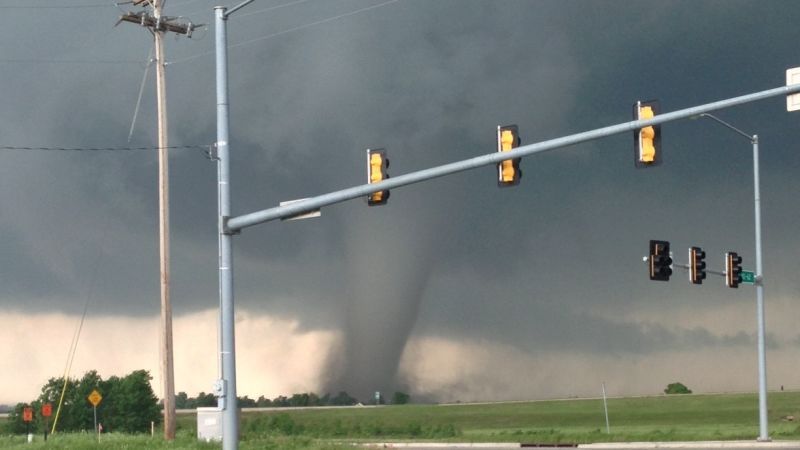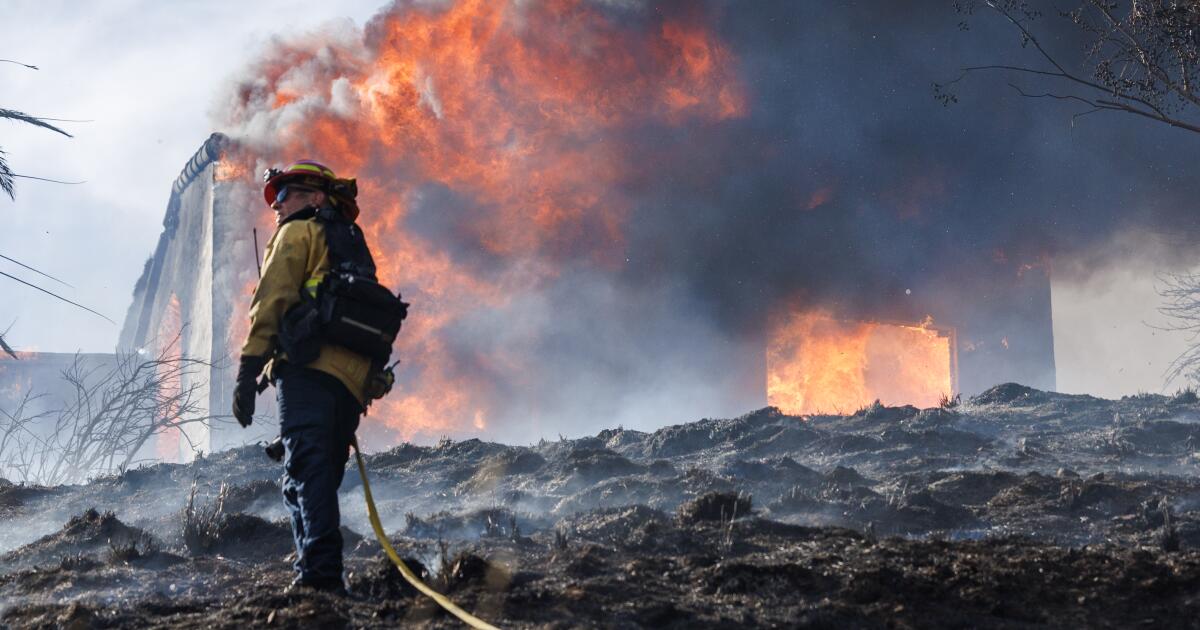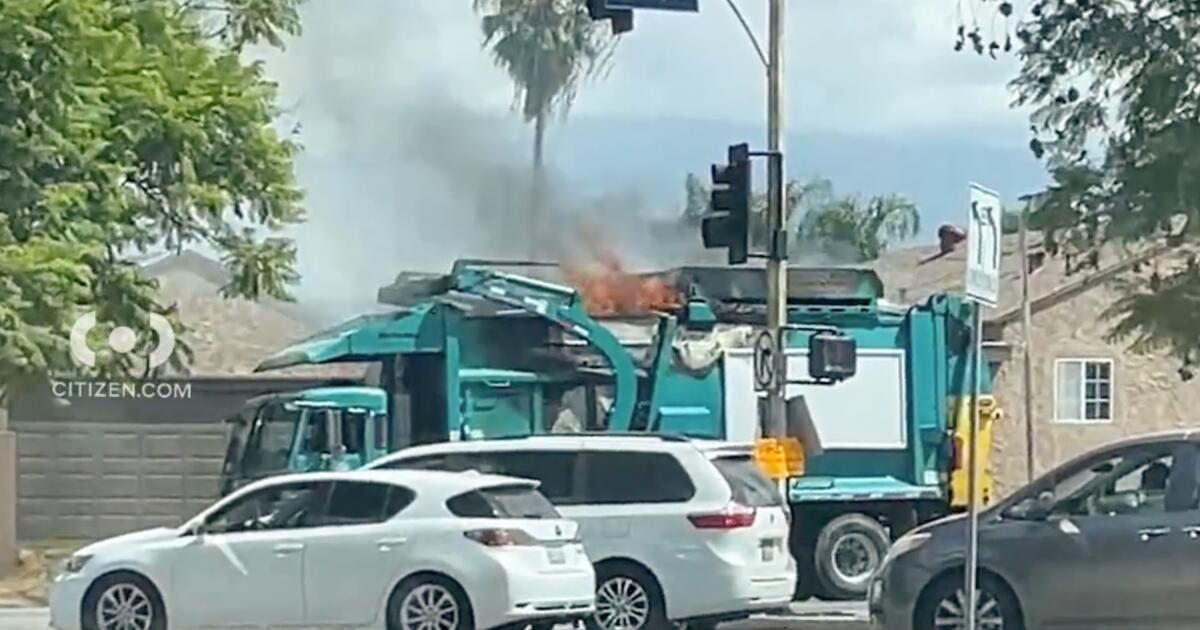cnn
—
The following is general information about tornadoes, rotating columns of air that are often, but not always, visible as funnel clouds. According to the National Weather Service, there were 83 tornado-related deaths in the United States in 2023.
Most tornadoes form from intense thunderstorms. Hurricanes can also produce tornadoes.
Tornado winds can exceed 300 miles (483 kilometers) per hour.
Tornadoes can lift cars, mobile homes, and animals into the air.
Tornadoes are sometimes called “tornadoes.”
On average, tornadoes travel between 10 and 20 miles per hour.
The average tornado stays on the ground for about five minutes.
The most destructive and deadly tornadoes occur in supercells, which are rotating thunderstorms with a well-defined radar circulation called a mesocyclone. Supercells can also produce damaging hail, strong non-tornado winds, unusually frequent lightning, and flash flooding.
A tornado over a body of water is called a “waterspout.”
The United States has the highest number of tornadoes in the world, with an average of more than 1,000 tornadoes reported each year.
A disproportionately high frequency of tornadoes occurs in Florida and in a region called “Tornado Alley,” which extends across the south central plains.
Tornadoes typically occur during spring and early summer, most often in the late afternoon and early evening.
The National Weather Service issues a tornado watch when atmospheric conditions promote the formation of tornadoes.
A tornado warning is issued when Doppler radar detects a mesocyclone in a storm or when a funnel cloud is detected.
A tornado emergency is improved wording on a tornado warning that indicates that a large tornado is moving toward a densely populated area. A serious threat to human life and catastrophic damage due to a tornado is imminent or ongoing. The term was coined by meteorologists in May 1999 and is used sparingly.
The Enhanced Fujita Scale went into operation on February 1, 2007. It is used to assign a tornado a rating based on the estimated wind speed and damage caused by the tornado.
EF0 is the weakest point on the enhanced Fujita scale and EF5 is the strongest.
March 18, 1925 – The deadliest American tornado in modern history hits the tri-state area of Missouri, Illinois and Indiana, killing 695 people. It is the oldest tornado and has the longest track of all tornadoes recorded in the United States.
1950 – The United States begins keeping official records on tornadoes.
February 2, 2007 – At least 20 people are dead in Lake and Volusia counties in Florida after at least three tornadoes touched down in the middle of the night.
March 1, 2007 – At least 20 people die, one in Missouri, 10 in Alabama and nine in Georgia due to a series of tornadoes. In Alabama, eight of the 10 dead are teenagers from Enterprise High School in Enterprise, Alabama.
February 5th-62008 – At least 57 people die, 31 in Tennessee, 14 in Arkansas, seven in Kentucky and five in Alabama due to a series of tornadoes.
March 14, 2008 – A tornado reaching EF2 strength hits downtown Atlanta, damaging the Georgia World Congress Center, the CNN Center, the Georgia Dome, and many other buildings. A person dies when a building collapses.
May 9-11, 2008 – A series of tornadoes kills 22 people in three states, including six in Ottawa County, Oklahoma; 13 in Newton County, Missouri; one in Jasper County, Missouri; one in an area of Purdy in Barry County, Missouri, and another in Laurens County, Georgia.
April 14-16, 2011 – At least 114 tornadoes touch down in Oklahoma, Kansas, Louisiana, Mississippi, Alabama, Missouri, Illinois, Georgia, South Carolina, North Carolina, Virginia, Maryland, Arkansas and Pennsylvania. Of the 46 deaths reported, 23 occur in North Carolina.
April 25-28, 2011 – A record outbreak of 362 confirmed tornadoes occurs. There are approximately 321 deaths in six states throughout the outbreak. The majority of deaths occur in Alabama, where up to 249 people die. Other states reporting deaths are Mississippi, Tennessee, Georgia, Virginia and Arkansas.
May 22, 2011 – An EF5 tornado hits Joplin, Missouri, killing at least 158 people. It is the deadliest tornado in the United States since federal records began being kept in 1950. The 1925 Tri-State tornado remains the deadliest tornado in modern U.S. history.
May 24, 2011 – Tornadoes hit Arkansas, Oklahoma and Kansas, killing at least 18 people.
2011 – NOAA reports that 751 tornadoes hit the United States in April 2011, breaking the previous monthly record of 542 tornadoes in May 2003.
May 20, 2013 – An EF5 tornado hits Moore, Oklahoma. The tornado's path is 17 miles long. Twenty-four people die.
January 20-22, 2017 – Twenty people die, more than in all of 2016, during a tornado outbreak that stretches from Texas to South Carolina. According to NOAA, more than 80 tornadoes are preliminarily reported in three days, and more than 60 on January 21 alone.
March 3, 2019 – A tornado outbreak hits Alabama, Georgia, Florida and South Carolina. In Lee County, Alabama, an EF4 tornado kills 23 people, making it the deadliest day for tornadoes in Alabama since the Tuscaloosa-Birmingham tornado that killed more than 200 people in 2011.
March 3, 2020 – Two tornadoes hit central Tennessee, killing at least 24 people.
March 24, 2023 – At least 26 people die after tornadoes hit Mississippi and Alabama. In Sharkey County, Mississippi, an EF4 tornado devastates much of the Rolling Fork community.
(Source: NOAA/NWS Storm Prediction Center)
March 18, 1925 – Missouri, Illinois and Indiana tri-state area: 695 deaths.
May 6, 1840 – Natchez, Mississippi: 317 deaths.
May 27, 1896 – St. Louis, Missouri: 255 deaths.
April 5, 1936 – Tupelo, Mississippi: 216 deaths.
April 6, 1936 – Gainesville, Georgia: 203 deaths.
April 9, 1947 – Woodward, Oklahoma: 181 deaths.
May 22, 2011 – Joplin, Missouri: 158 deaths.
April 24, 1908 – Amite, Louisiana and Purvis, Mississippi: 143 deaths.
June 12, 1899 – New Richmond, Wisconsin: 117 deaths.
June 8, 1953 – Flint, Michigan: 116 deaths.
(Source: NOAA/NWS Storm Prediction Center)
May 22, 2011 – Joplin, Missouri – $2.8 billion (actual cost) – $3.78 billion (adjusted for inflation)
April 27, 2011 – Tuscaloosa, Alabama – $2.45 billion (actual cost) – $3.33 billion (adjusted for inflation)
May 20, 2013 – Moore, Oklahoma – $2 billion (actual cost) – $2.62 billion (adjusted for inflation)
June 8, 1966 – Topeka, Kansas – $250 million (actual cost) – $2.35 billion (adjusted for inflation)
May 11, 1970 – Lubbock, Texas – $250 million (actual cost) – $1.97 billion (adjusted for inflation)
October 20, 2019 – North Dallas, Texas – $1.55 billion (actual cost) – $1.84 billion (adjusted for inflation)
May 3, 1999 – Moore/Oklahoma City, Oklahoma – $1 billion (actual cost) – $1.83 billion (adjusted for inflation)
March 3, 2020 – Nashville, Tennessee – $1.5 billion (actual cost) – $1.78 billion (adjusted for inflation)
April 27, 2011 – Hackleburg, Alabama – $1.29 billion (actual cost) – $1.75 billion (adjusted for inflation)
April 3, 1974 – Xenia, Ohio – $250 million (actual cost) – $1.59 billion (adjusted for inflation)












